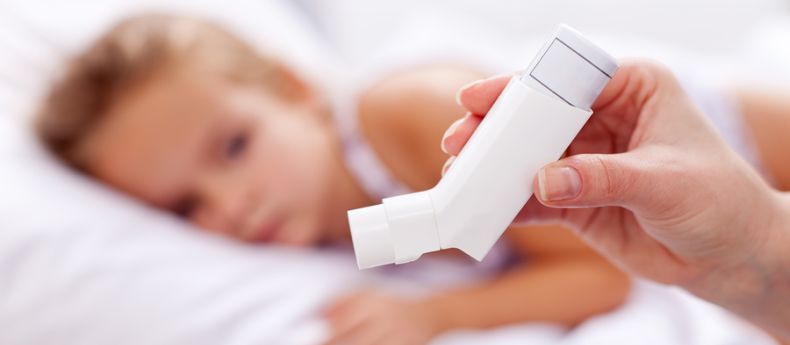
Help Your Child Avoid Asthma Triggers
The symptoms of pediatric asthma can range from a nagging cough that lingers for days or weeks to sudden and scary breathing emergencies. Common symptoms include:
- Coughing, especially at night
- A wheezing or whistling sound, especially when breathing out
- Trouble breathing or fast breathing that causes the skin around the ribs or neck to pull in tightly
- Frequent colds that settle in the chest
Your child might have only one of these symptoms, or several of them. You may think it’s just a cold or bronchitis. If the symptoms recur, that’s a clue that your child might have asthma. In addition, symptoms may worsen when your child is around asthma triggers, such as irritants in the air (smoke or strong odors, for example) or allergens like pollen, pet dander and dust mites.
Help Your Child Avoid Triggers
While it is impossible to make the place you live in completely allergenor irritant-free, there are things you can do to reduce your child’s exposure to triggers. The following tips may help.
- Do not smoke or let anyone else smoke in your home or car.
- Reduce exposure to dust mites. The most necessary and effective things to do are to cover your child’s mattress and pillows with special allergy-proof encasings, wash their bedding in hot water every 1 to 2 weeks, remove stuffed toys from the bedroom, and vacuum and dust regularly. Other avoidance measures, which are more difficult or expensive, include reducing the humidity in the house with a dehumidifier or removing carpeting in the bedroom. Bedrooms in basements should not be carpeted.
- If allergic to furry pets, the only truly effective means of reducing exposure to pet allergens is to remove them from the home. If this is not possible, keep them out of your child’s bedroom and consider putting a high-efficiency particulate air (HEPA) filter in their bedroom, removing carpeting, covering mattress and pillows with mite-proof encasings, and washing the animals regularly.
- Reduce cockroach infestation by regularly exterminating, setting roach traps, repairing holes in walls or other entry points, and avoiding leaving exposed food or garbage.
- Mold in homes is often due to excessive moisture indoors, which can result from water damage due to flooding, leaky roofs, leaking pipes, or excessive humidity. Repair any sources of water leakage. Control indoor humidity by using exhaust fans in the bathrooms and kitchen, and adding a dehumidifier in areas with naturally high humidity. Clean existing mold contamination with detergent and water. Sometimes porous materials such as wallboards with mold contamination have to be replaced.
- Pollen exposure can be reduced by using an air conditioner in your child’s bedroom, with the vent closed, and leaving doors and windows closed during high pollen times. (Times vary with allergens, ask your allergist.)
- Reduce indoor irritants by using unscented cleaning products and avoiding mothballs, room deodorizers, or scented candles.
- Check air quality reports in weather forecasts or on the Internet. When the air quality is poor, keep your child indoors and be sure he takes his asthma control medications.
- Decreasing your child’s exposure to triggers will help decrease symptoms as well as the need for asthma medications.
Copyright United Family Healthcare 2018 All right reserved ICP 京ICP备13017554号-4




